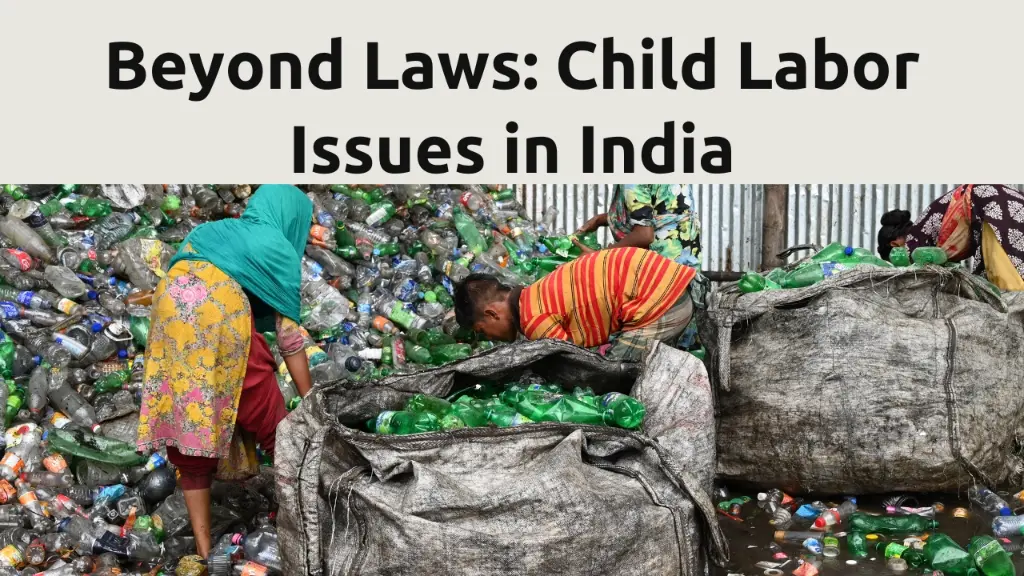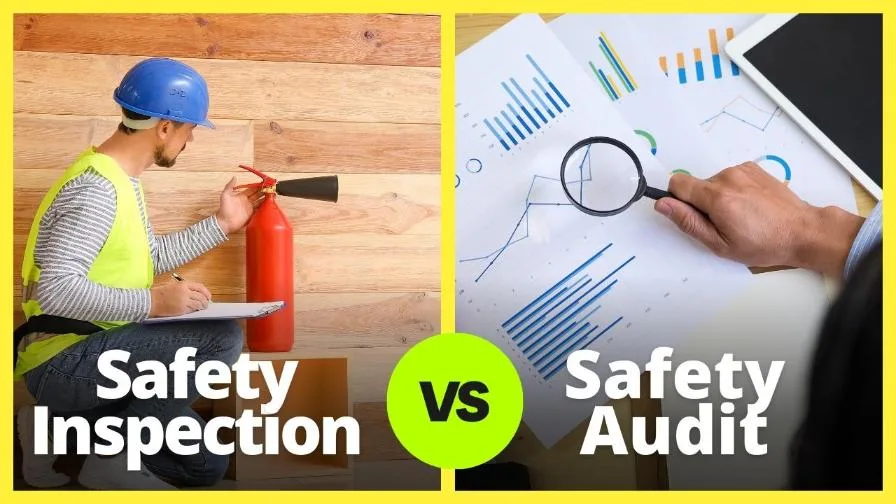This Child Labour Essay explore the complexities of child labor issues in India and uncover why laws alone aren’t enough to address this pervasive problem. Through this blog on child labour, delve into the challenges, root causes and potential solutions to combat child labor, and discover how collective action can bring about lasting change for India’s children.
1. Introduction of Child Labor Issues in India: Why Laws Alone Aren’t Enough / child labour essay or child labour in india essay
Imagine a vibrant childhood – playgrounds echoing with laughter, classrooms buzzing with curiosity, dreams taking flight on paper wings.
Now, replace that with dust-filled factories, calloused hands wielding heavy tools and young eyes dulled by exhaustion. Sadly this is the reality for millions of children in India who are trapped in the clutches of child labor.
Child labour remains a persistent issue in India despite various laws and regulations aimed at its eradication. In this blog post, we delve into the intricate web of child labor issues in India and explore why laws alone fail to address this deep-rooted problem.
While laws such as Child Labour (Prohibition & Regulation) Act provide a foundation for action, they often fall short in addressing the multifaceted challenges that perpetuate child labor.
2. Causes of Child Labour in India or Reasons of Child Labour or child labour causes:
Here are some of the key issues or child labour causes covered on this child labour essay:
2.1 Poverty & Other Economic Factors:
Poverty is one of the primary drivers of child labor in India. Inadequate livelihood opportunities for adults, coupled with the need for additional income in poor households, perpetuate the cycle of child labor as families.
Families living in poverty often rely on their children to contribute to household income. This may lead to the exploitation of children for labor purposes as families prioritize economic survival over the rights and well-being of children.
According to the International Labour Organization (ILO) and as per Indian Census 2011, there were an estimated 10.1 million children aged 5-14 engaged in child labor.
2.2 Lack of Education:
Limited access to education, particularly in rural areas, exacerbates the prevalence of child labor. Challenges within the education system, such as inadequate infrastructure, teacher shortage and low-quality education, contribute to high dropout rates.
Many children are forced to drop out of school or never enroll due to various socio-economic factors, perpetuating the cycle of poverty and exploitation.
As per the Census of India 2011, around 22.4% of children aged 5-14 are out of school, contributing to the vulnerability of children to engage in labor activities.
2.3 Informal Economy:
The prevalence of the informal economy in sectors such as agriculture, domestic work and small-scale industries provides fertile ground for child labor exploitation. These sectors often lack regulation and oversight, making it easier for children to be employed under hazardous conditions.
The National Sample Survey Organization (NSSO) estimated that 65% of child labourers in India are engaged in agriculture, followed by 17% in manufacturing and 15% in services.
2.4 Weak Enforcement of Laws:
Despite the existence of laws and regulations prohibiting child labor, enforcement remains a significant challenge. Limited resources, corruption and lack of awareness contribute to weak implementation of these laws, allowing the practice of child labor to persist.
According to a report by the Bachpan Bachao Andolan (BBA), only 3% of child labor cases result in convictions, highlighting the failure of enforcement mechanisms.
3. What can be done to Improve the Situation or Child Labour Solutions:
Preventing child labor requires a multi-faceted approach that involves not only government and administrative actions but also active participation from society and families. Here are some constructive actions and remedial measures that can be taken to prevent child labor:
3.1 Strengthening Education:
3.1.1 Improving Access:
Ensure universal access to quality education by investing in infrastructure, providing scholarships and incentivizing school attendance.
3.1.2 Enhancing Quality:
Upgrade the quality of education by training teachers, updating curriculum, and providing educational resources.
3.1.3 Addressing Barriers:
Address socio-economic barriers to education such as poverty, discrimination, and cultural norms that prioritize work over schooling.
3.2 Economic Empowerment:
3.2.1 Livelihood Opportunities:
Create sustainable livelihood opportunities for adults, particularly in rural areas, through skill development programs, microfinance initiatives and agricultural reforms.
3.2.2 Livelihood Diversification:
Encourage diversification of livelihood options beyond traditional sectors to reduce reliance on child labor for household income.
3.3 Awareness and Advocacy:
3.3.1 Community Awareness:
Conduct awareness campaigns at the grassroots level to sensitize communities about the harmful effects of child labor and the importance of education.
3.3.2 Legal Literacy:
Educate families and children about their rights and entitlements under relevant laws and regulations to empower them to resist exploitation.
3.4 Social Support Systems:
3.4.1 Child Welfare Services:
Strengthen child protection services to provide support and rehabilitation to children rescued from child labor, including access to healthcare, counseling, and education.
3.4.2 Community Support Networks:
Establish community-based support networks to provide assistance to vulnerable families, including access to social welfare schemes, counselling, and peer support.
3.5 Corporate Responsibility:
3.5.1 Supply Chain Accountability:
Promote corporate social responsibility by holding businesses accountable for ensuring ethical supply chains free from child labor and exploitation.
3.5.2 Promoting Child-Friendly Workplaces:
Encourage businesses to adopt child-friendly workplace policies, such as flexible working hours for parents and provisions for childcare facilities.
3.6 Family and Societal Intervention:
3.6.1 Empowering Families:
Provide support to families through targeted interventions such as income-generating activities, parental education programs, and access to social services.
3.6.2 Changing Social Norms:
Challenge and change societal attitudes and norms that perpetuate child labor by promoting the value of education and the rights of children.
4. Roles and Responsibilities of Family and Society:
4.1 Family Responsibility:
Families play a crucial role in preventing child labour. They must prioritize their children’s education and refrain from sending them to work at a young age.
Example: Instead of sending a child to work in a factory, the family should enrol them in a nearby school and support their education.
4.2 Social Responsibility:
Society as a whole should be vigilant against instances of child labour. Reporting any such cases to the authorities can help in the rescue and rehabilitation of affected children.
Example: If a neighbour notices a child working in a hazardous environment, they should inform the local authorities or child welfare organisations.
5. Legal Rights of Citizens
Under the Child Labour (Prohibition and Regulation) Act, citizens have the right to:
5.1 Report Violations:
Anyone can report instances of child labour to the appropriate authorities without fear of reprisal.
5.2 Access to Education:
Every child has the right to free and compulsory education. Families can avail of government schemes to support their children’s education.
6. Where to Seek Help
In case of dispute or violation of the Child Labour Act, individuals can approach:
6.1 Local Authorities:
Police stations, labor departments and child welfare committees can address complaints related to child labour.
6.2 NGOs and Child Welfare Organizations:
Several non-governmental organizations work tirelessly to eradicate child labour and provide support to affected children.
7. Conclusion of Child Labour Essay
In conclusion, addressing the complex issue of child labor in India requires concerted efforts from all stakeholders, including the government, civil society organizations, communities and individuals. While laws and regulations provide a framework for action, effective implementation, along with addressing underlying socio-economic factors, is essential to combating child labor and ensuring the rights and well-being of every child.
Click the link to read more topics on 2024 Calendar and Important Days for HSE Professionals.
For future updates, suggestion and discussion, please connect with us on Facebook, Twitter & Linkedin.






